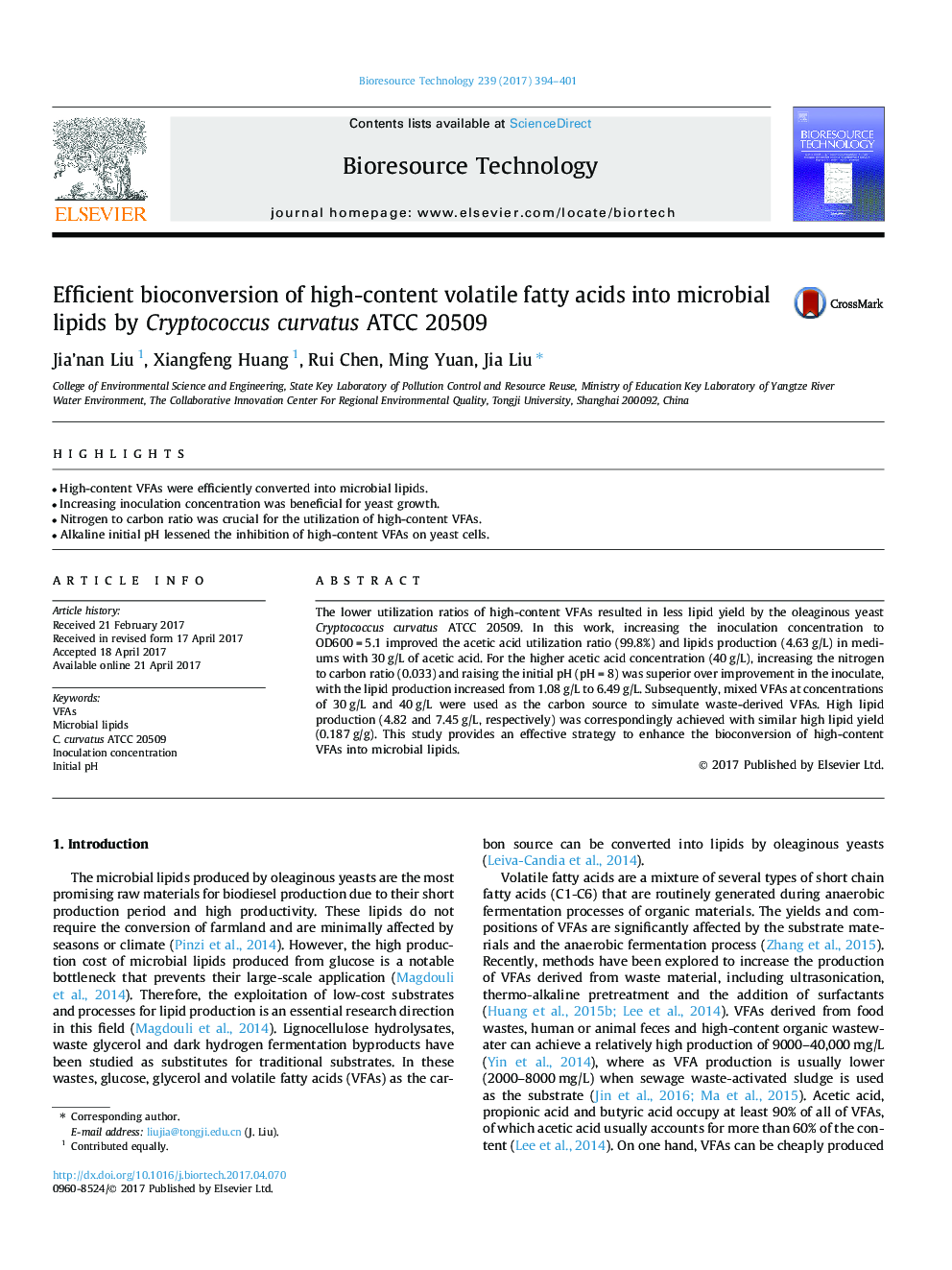| Article ID | Journal | Published Year | Pages | File Type |
|---|---|---|---|---|
| 4997179 | Bioresource Technology | 2017 | 8 Pages |
â¢High-content VFAs were efficiently converted into microbial lipids.â¢Increasing inoculation concentration was beneficial for yeast growth.â¢Nitrogen to carbon ratio was crucial for the utilization of high-content VFAs.â¢Alkaline initial pH lessened the inhibition of high-content VFAs on yeast cells.
The lower utilization ratios of high-content VFAs resulted in less lipid yield by the oleaginous yeast Cryptococcus curvatus ATCC 20509. In this work, increasing the inoculation concentration to OD600Â =Â 5.1 improved the acetic acid utilization ratio (99.8%) and lipids production (4.63Â g/L) in mediums with 30Â g/L of acetic acid. For the higher acetic acid concentration (40Â g/L), increasing the nitrogen to carbon ratio (0.033) and raising the initial pH (pHÂ =Â 8) was superior over improvement in the inoculate, with the lipid production increased from 1.08Â g/L to 6.49Â g/L. Subsequently, mixed VFAs at concentrations of 30Â g/L and 40Â g/L were used as the carbon source to simulate waste-derived VFAs. High lipid production (4.82 and 7.45Â g/L, respectively) was correspondingly achieved with similar high lipid yield (0.187Â g/g). This study provides an effective strategy to enhance the bioconversion of high-content VFAs into microbial lipids.
